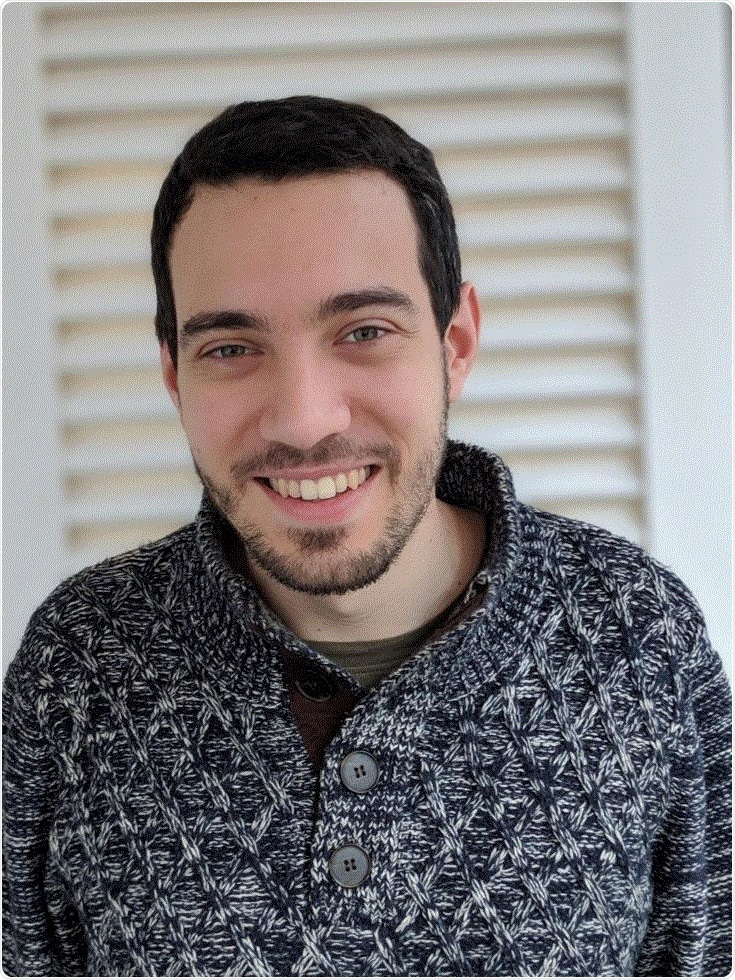The world’s first systematic study has explained how SARS-CoV-2 and other human viruses are more adapted to infect specific types of tissues based on their potential to hijack protein synthesis and cellular machinery.

Xavier Hernandez, PhD student at the Serrano Lab at the Centre for Genomic Regulation (CRG). Image Credit: Centre for Genomic Regulation (CRG).
Xavier Hernandez, PhD student at the Serrano Lab at the Centre for Genomic Regulation (CRG). Image Credit: Centre for Genomic Regulation (CRG).
The study, performed by scientists from the Centre for Genomic Regulation (CRG), may lead to the development of more effective vaccines, gene therapies, and antiviral treatments. The study results were recently published in the Cell Reports journal.
Living organisms produce proteins within their cells. Every protein contains single amino acid units that are sutured together based on the instructions encoded inside DNA. Codons are the fundamental units of these instructions, and each codon corresponds to a particular amino acid. When two or more codons lead to cells that produce the same amino acid, they are referred to as synonymous codons.
Different tissues use different languages to make proteins, meaning they preferentially use some synonymous codons over others. We know this because tRNAs, the molecules responsible for recognizing codons and sticking on the corresponding amino acid, have different abundances in different tissues.”
Xavier Hernandez, Study First Author and Researcher, Centre for Genomic Regulation
When infecting an organism, a virus needs to steal the host’s machinery to create its own proteins. The research team wanted to find out whether viruses were particularly adapted to use the synonymous codons that are preferentially utilized by the tissues they infect.
The investigators downloaded the openly available protein sequences of all familiar human viruses and examined the use of codons. Then, based on the abundance of familiar tRNA in different tissues, they determined the level of adaptation of all the 502 human-infecting viruses at infecting a total of 23 different human tissues.
Viral proteins that are expressed during the early stage of infection were better adapted to steal the protein-making machinery of the host.
Well adapted viruses start by using the preferred language of the cell but after taking full control they impose a new one that meets its own needs. This is important because viruses are used in gene therapy to treat genetic diseases and, if we want to correct a mutation in one tissue, we should modify the virus to be optimal for that particular tissue.”
Xavier Hernandez, Study First Author and Researcher, Centre for Genomic Regulation
The investigators then closely looked at how different types of respiratory viruses are adapted to infecting particular tissues based on their use of codons. They also looked at four separate coronaviruses, including MERS-CoV, SARS-CoV, SARS-CoV-2, and the bat coronavirus that is most closely associated with SARS-CoV-2. The team also studied the influenza A virus H1N1 that causes the common flu.
The researchers observed that SARS-CoV-2 modified its codon use to the brain, lung tissue, and gastrointestinal tract. Since this corresponds with familiar COVID-19 symptoms, like diarrhea, or loss of smell and taste, and pneumonia, the researchers believe that future vaccines and therapies could consider this aspect to create immunity in these tissues.
Out of the respiratory viruses we took a close look at, SARS-CoV-2 is the virus that is most highly adapted to hijacking the protein synthesis machinery of its host tissue, but not more so than influenza or the bat coronavirus. This suggests that factors other than translational efficiency play an important role in infection, for example, the ACE2 receptor expression or the immune system.”
Xavier Hernandez, Study First Author and Researcher, Centre for Genomic Regulation
The next step for the researchers is to further design a biotechnological tool to develop improved protein sequences that contain codons adapted to the target tissue and this may prove handy for developing gene therapies.
Source:
Journal reference:
Hernandez-Alias, X., et al. (2021) Translational adaptation of human viruses to the tissues they infect. Cell Reports. doi.org/10.1016/j.celrep.2021.108872.